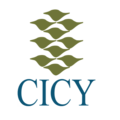Por favor, use este identificador para citar o enlazar este ítem:
http://cicy.repositorioinstitucional.mx/jspui/handle/1003/140| Cuticular Wax Composition of Coconut Palms and their Susceptibility to Lethal Yellowing Disease | |
| LUIS MANUEL PEÑA RODRIGUEZ | |
| Acceso Abierto | |
| Atribución-NoComercial-SinDerivadas | |
| A number of metabolites isolated and identified from cuticular waxes have been used as chemotaxonomical markers and to explain the role of the wax layer in plant-insect and plant-pathogen interactions. Chromatographic analysis of the cuticular wax from pinnae of five coconut palm ecotypes showed that the three main components (I, II, III) in the wax can be used as chemotaxonomical markers for classification. The positive correlation found between the content of metabolites I, II, and IIIin the wax from the various ecotypes and their resistance or susceptibility to the lethal yellowing disease of coconut palms, did not coincide with the results obtained in an antifeedant assay. The results suggest that while the individual components do not play a significant role in the palm-insect interaction, the full composition of the cuticular wax does. | |
| 30-03-2012 | |
| Artículo | |
| CIENCIAS AGROPECUARIAS Y BIOTECNOLOGÍA | |
| Aparece en las colecciones: | Artículos de Investigación Arbitrados |
Cargar archivos:
| Fichero | Descripción | Tamaño | Formato | |
|---|---|---|---|---|
| 19204.pdf | 434.02 kB | Adobe PDF | Visualizar/Abrir |
